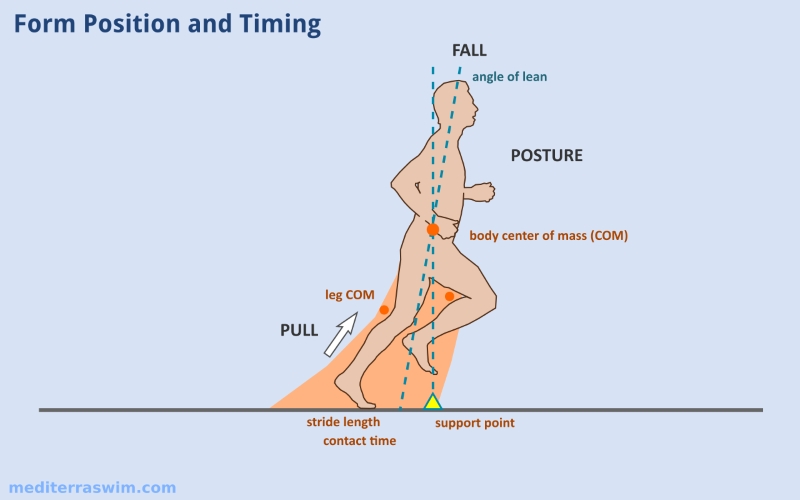Once you have learned to use the lean (the fall) to channel gravity into pulling your body forward, the work of the legs is to catch up with your body falling forward, and provide ‘just enough’ support to prevent the body from falling to the ground,
for just the briefest moment.The stride will have these characteristics:
- The legs spread out behind your body
- Each step feels lighter
- Contact time feels extremely brief
- The stride rate (cadence is faster)
- The stride length is shorter
- The heel rises off the ground minimally

To affect these characteristics you primarily control:
- The angle of lean
- When you pull the foot
- How high you pull the foot (or heel)
- Where you place the foot to take up support under the COM
The better you position and time these actions, the more you will notice these characteristics in your stride. Your foot will experience less ground reaction force, which means you will send less shock up from the foot into the body. Your foot will spend less time on the ground.
When the pieces of your form come together you will have a very fast cadence – somewhere between 175 and 185 beats (touches) per minute.
[You may download a free metronome app to your phone or tablet to measure your current cadence and help you gradually increase cadence as you gradually improve your form. ]
Speed = Cadence x Stride Length
When you run faster your cadence will remain fast, and the stride length will get longer as the legs spread out behind you. Your body is traveling forward faster, the stride is longer, but because your body is moving forward faster, the foot stays on the ground about the same amount of time as when you are running slower.
When you run slower your cadence will remain fast, and the stride length will get shorter, with the legs ‘shuffling’ behind you. Your body is traveling slower, and to maintain the briefest contact time, your stride is shorter, the heel barely rising toward the hip.
Because cadence stays the same, ground contact time stays about the same, whether running slower or faster. Mostly what changes (what you can notice most readily) is that your stride length, and how high you pull the heel.

